Horizon Hobby DASRX15 Receiver User Manual
Horizon Hobby, LLC Receiver
Contents
- 1. User Manual
- 2. Users Manual
User Manual

EN
1
AR636 User Guide
AR636 Bedienungsanleitung
Guide de L’utilisateur - AR636
AR636 Guidea Dell’utente
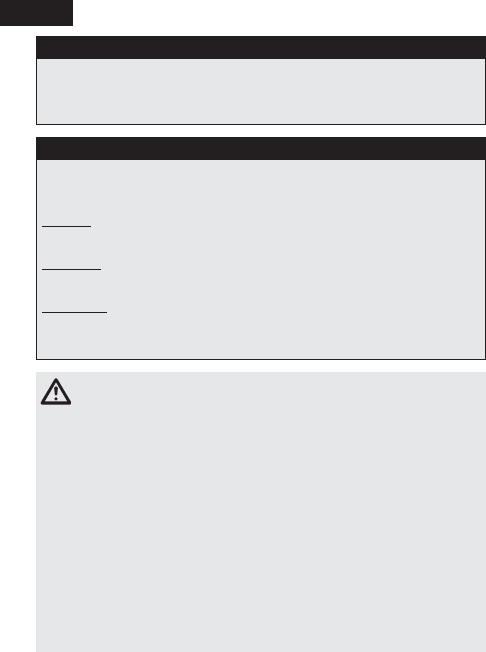
EN
2
NOTICE
All instructions, warranties and other collateral documents are subject to
change at the sole discretion of Horizon Hobby, LLC. For up-to-date product
literature, visit horizonhobby.com and click on the support tab for this product.
Meaning of Special Language
The following terms are used throughout the product literature to indicate
various levels of potential harm when operating this product:
NOTICE: Procedures, which if not properly followed, create a possibility of
physical property damage AND a little or no possibility of injury.
CAUTION: Procedures, which if not properly followed, create the probability
of physical property damage AND a possibility of serious injury.
WARNING: Procedures, which if not properly followed, create the probability
of property damage, collateral damage, and serious injury OR create a high
probability of superficial injury.
WARNING: Read the ENTIRE instruction manual to become familiar
with the features of the product before operating. Failure to operate
the product correctly can result in damage to the product, personal
property and cause serious injury.
This is a sophisticated hobby product. It must be operated with caution and
common sense and requires some basic mechanical ability. Failure to oper-
ate this Product in a safe and responsible manner could result in injury or
damage to the product or other property. This product is not intended for use
by children without direct adult supervision. Do not attempt disassembly, use
with incompatible components or augment product in any way without the
approval of Horizon Hobby, LLC. This manual contains instructions for safety,
operation and maintenance. It is essential to read and follow all the instruc-
tions and warnings in the manual, prior to assembly, setup or use, in order to
operate correctly and avoid damage or serious injury.
Age Recommendation: Not for children under 14 years. This is not a toy.
WARNING AGAINST COUNTERFEIT PRODUCTS
Thank you for purchasing a genuine Spektrum product. Always purchase
from a Horizon Hobby, LLC authorized dealer to ensure authentic high-quality
Spektrum product. Horizon Hobby, LLC disclaims all support and warranty
with regards, but not limited to, compatibility and performance of counterfeit
products or products claiming compatibility with DSM or Spektrum.
NOTICE: This product is only intended for use with unmanned, hobby-grade,
remote-controlled vehicles and aircraft. Horizon Hobby disclaims all liability outside of
the intended purpose and will not provide warranty service related thereto.
WARRANTY REGISTRATION
Visit www.spektrumrc.com/registration today to register your product.

EN
3
DSMX®
Spektrum launched the 2.4GHz RC revolution with its DSM2® technology.
Since then, millions of hobbyists the world over have come to embrace 2.4 as
the way to fly. Spektrum leads the way yet again with DSMX—the world’s first
wideband frequency-agile 2.4GHz signal protocol.
How Does DSMX Work?
It’s a crowded 2.4GHz world out there and every 2.4GHz system faces the
same challenges. DSMX better equips you for these challenges by combining
the superior data capacity and interference resistance of a wideband signal
(like that used in DSM2) with the agility of frequency shifts. Compared to the
wideband signal of DSMX, the narrow band signal of other frequency hopping
2.4 transmitters is more likely to suffer data loss in the event of on-channel
interference. Think of it as a river vs. a stream. It takes more interference to dam
a river than it does a stream. As more and more 2.4 transmitters vie for the same
number of available channels, there is more interference and more of a risk for
data loss. By adding the agility of frequency shifts to the superior interference
resistance of a wideband signal, DSMX is far less likely to suffer significant data
loss from on-channel interference. The result is quicker connection times and
superior response in even the most crowded 2.4GHz environment.
DSMX Operational Differences
DSMX transmitters and receivers function nearly identically to Spektrum DSM2
systems. Binding, setting the failsafe, recording flight log data, as well as general
use of the system is no different than using any current Spektrum system.
Following are the operational differences:
Brownout Detection - Not Available on DSMX Receivers. DSM2 receivers
feature Brownout Detection that flashes the receivers LED if a power
interruption occurs. While DSMX receivers have QuickConnect™ technology and
recover instantly from a power interruption, the architecture of DSMX prevents
Brownout Detection when operating in DSMX mode.
Flight Log Recording-Fades Higher than DSM2
Note that DSMX moves through the band while DSM2 finds two quiet channels
and remains on those channels. Consequently because DSMX operates on quiet
and noisy channels, it’s common to have more Antenna Fades than when using
DSM2, when used in busy 2.4GHz environments. When taking flight log data
readings, the Frames and Hold Data are important and should be used as a
reference while Fades are insignificant due to the nature of frequency shifting. A
10-minute flight will typically result in less than 50 Frame Losses and no Holds.
Just How Good is DSMX?
In multiple tests, 100 DSMX systems were operated simultaneously for
extended periods of time. During these tests each of the 100 systems was
monitored in flight and on the ground. In every test not a single case of RF link
loss, latency increase or control degradation was experienced or recorded.

EN
4
Is DSMX Compatible with DSM2?
Yes. DSMX is fully compatible with all DSM2 hardware. In fact, many pilots may find
the DSM2 equipment they have now is all they will ever need. Even if a new DSMX
transmitter eventually comes along that they really want, all the DSM2 receivers
they have now will work with it. It is important to note, however, that while DSMX is
compatible with DSM2, the only way to experience the full benefits of DSMX in a
busy 2.4 environment is by pairing a DSMX transmitter with a DSMX receiver.
Are DSM2 Transmitters Eligible for a DSMX Add-on?
Yes. All DSM2 transmitters, except the DX5e, are eligible for the add-on by
going to https://community.spektrumrc.com for details. DSM2 receivers and
transmitter modules are not eligible for the DSMX add-on.
Does DSMX have ModelMatch™ and ServoSync™ Technology?
Yes. DSMX will provide you with these and other exclusive Spektrum
advantages you already enjoy with DSM2. Want to know more about DSMX?
Visit spektrumrc.com for complete details on this as well as the many other
reasons Spektrum is the leader in 2.4.
NOTICE: DSMX receivers are not compatible with DSM2 remote receivers
and DSM2 receivers are not compatible with DSMX remote receivers.
• DSMXtransmittersarecompatiblewithallDSM2andDSMXreceiversand
will operate in the mode noted below.
• DSM2transmittersarecompatiblewithallDSM2andDSMXreceiversand
will operate in the mode noted below.
• DSMXtechnologyisactiveonlywhenbothtransmitterandreceiverare
DSMX enabled.
NOTICE: DSMX upgraded DX5e and DX6i transmitters are compatible with
all DSMX receivers except the high-speed DSM2 receivers (like the AR7600,
AR9000, etc.). When using a high-speed DSM2 receiver with the DX5e or
DX6i, it’s necessary to manually put these transmitters into DSM2 mode. See
the Spektrum website for details on DX5e/DX6i DSM2 mode for details.
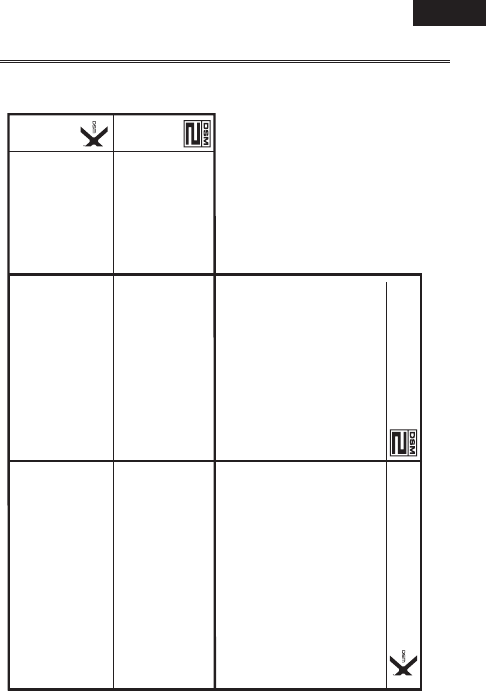
EN
5
Transmitter-Receiver Compatibility
AR500
AR600
AR6100
AR6110/e
AR6200
AR6255
AR6300
AR6400/ALL
AR7000
AR7100/R
AR7600
AR8000
AR9000
AR9100
AR9200
AR9300
AR12000
AR12100
AR400
AR600
AR610
AR610C
AR636
AR6115/e
AR6210
AR6255
AR6310
AR6410/ALL
AR7010
AR7110/R
AR7200BX
AR7610
AR8000
AR9010
AR9020
AR9110
AR9210
AR9310
AR10000
AR12010
AR12020
AR12110
AR12120
DX5e
DX6i
DX7
DX7SE
DX8
DX10t
Modules
DX5e
DX6i
DX7
DX7s
DX8
DX10t
DX18
Set Tx to DSM2 only
DSM2 DSM2
DSM2 DSMX
Transmitter
Receiver
DSM2 DSMX
DSMX DSM2
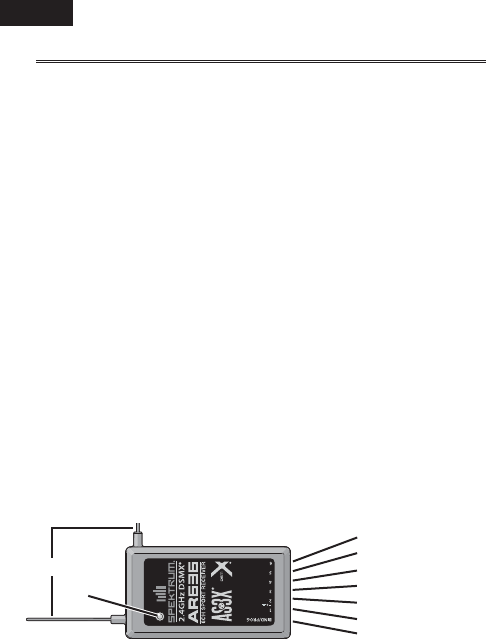
EN
6
AR636 Instruction Manual
The AR636 full range 6-channel receiver features DSMX® technology and is
compatible with all Spektrum™ transmitters that support DSM2® and DSMX
technology.
Features
• 6-ChannelFullRangeReceiverwithintegratedAS3X® technology
• ProgrammablefrommobiledevicesorPC
• Threegyromodes:Off,RateModeandHeadingHold
• Assignablechanneloutputs
Applications
Full range aircraft using up to 6 channels. Not for use in aircraft with full carbon
fiber fuselages.
Specifications
Type: DSMX Full Range Receiver
Channels: 6
Modulation: DSM2, DSMX
Dimension (WxLxH): .90 x 1.70 x 0.60 in (23.5 x 42.0 x 14.0mm)
Weight: 0.36 oz (10.2 g) main receiver
Input Voltage Range: 3.5–9.6V
Resolution: 2048
Compatibility: All DSM2 and DSMX Aircraft Transmitters and Module Systems
Binding
The AR636 receiver must be bound to the transmitter before it will operate.
Binding is the process of teaching the receiver the specific code of the
transmitter so it will only connect to that specific transmitter.
TIP: If you are going to use the AS3X feature, do not connect any servos to
the receiver during binding. When you activate AS3X, the Spektrum AS3X
Programmer app will show you where to connect the servos.
AUX1 (Auxilary 1 port)
GEAR (Gear port)
RUDD (Rudder port)
ELEV (Elevator port)
AILE (Aileron port)
THRO (Throttle port)
BIND/DATA
(Bind, Data port)
Antennas
LED

EN
7
1. Insert the bind plug in the BIND port on the receiver.
2. Power the receiver through any open channel port. The orange LED on the
receiver flashes, indicating the receiver is in bind mode. NEVER power the
receiver through a telemetry port.
3. Put the transmitter in bind mode. Binding is complete when the orange LED
on the receiver is solid.
4. Remove the bind plug from the BIND/DATA port on the receiver before you
power off the transmitter and store it in a convenient place.
NOTICE: Remove the bind plug to prevent the system from entering bind
mode the next time the power is turned on.
5. After you set up your model, always rebind the transmitter and receiver to
set the desired failsafe positions.
Antenna Polarization
For optimum RF link performance it’s important that the antennas be mounted in
an orientation that allows for the best possible signal reception when the aircraft
is in all possible attitudes and positions. This is known as antenna polarization.
The antennas should be oriented perpendicular to each other; typically vertical
and horizontal and at different angles (see Receiver Installation below).
Using the AR636 Receiver With AS3X
By default, AS3X technology is turned off in AR636 receivers. Before activating AS3X,
you will need to properly install the receiver in the aircraft and download the Spektrum
Programmer to your mobile device. An interface cable (SPMA3080 sold separately) is
required for programming the receiver.
Activating AS3X
1. Bind the transmitter and receiver.
2. Download the Spektrum Programmer from SpektrumRC.com or from your
mobile device (iOS or Android).
3. Power on the transmitter and receiver.
4. Open the Spektrum AS3X application.
5. Connect the audio interface cable to the bind/data port of the receiver and
the device.
6. Use the application to program the receiver. For instructions on how to use
the application, please consult the manual in the application.
7. Press “Update” in the application to save the receiver programming.
AUX1 (Auxilary 1 port)
GEAR (Gear port)
RUDD (Rudder port)
ELEV (Elevator port)
AILE (Aileron port)
THRO (Throttle port)
BIND/DATA
(Bind, Data port)

EN
8
Installing the Receiver
1. You can install the receiver under the canopy or in the bottom of the
fuselage. The servo pins must point toward the nose or tail of the fuselage.
2. Connect the servo and telemetry leads to the receiver.
3. Use double-sided foam tape to secure the receiver.
Important: Y-Harnesses and Servo Extensions
When using a Y-harness or servo extensions in your installation, it’s important
to use standard, non-amplified Y-harnesses and servo extensions. Amplified
Y-harnesses and servo extensions will cause the servos to operate erratically or
not function at all.
Setting the Failsafe Positions
The Receiver features two types of failsafe: SmartSafe and Preset Failsafe.
SmartSafe
SmartSafe™ failsafe is recommended for most aircraft.
When the transmitter and receiver are turned on, the receiver connects to the
transmitter and normal control of all channels occurs. If loss of signal occurs,
SmartSafe moves the throttle channel to its preset failsafe position (low throttle)
that was set during binding. All other channels hold their last position. When the
receiver detects signal from the transmitter, normal aircraft operation resumes.
Receiver Power Only
• WithSmartSafewhenthereceiveronlyisturnedon(notransmittersignalis
present), the throttle channel has no output, to avoid operating or arming the
electronic speed control.
• Allotherchannelsaredriventotheirpresetfailsafepositionssetduringbinding.
Range Testing
Before each flying session and especially with a new model, it is important to
perform a range check. All Spektrum aircraft transmitters incorporate a range
testing system which, when activated, reduces the output power, allowing
a range check.
1. With the model restrained on the ground, stand 30 paces (approx. 90
feet/28 meters) away from the model.
2. Face the model with the transmitter in your normal flying position and place
your transmitter into range check mode.
3. You should have total control of the model with the button depressed at 30
paces (90 feet/28 meters).
4. If control issues exist, contact the appropriate product support department.

EN
9
Advanced Range Testing
For sophisticated models that have significant conductive material in them, the
Advanced range test using a flight log is recommended. The advanced range check
will confirm that the internal and remote receivers are operating optimally and
that the installation (position of the receivers) is optimized for the specific aircraft.
This Advanced Range Check allows the RF performance of each receiver to be
evaluated and to optimize the locations of the remote receiver.
IMPORTANT: If you don’t have a telemetry-capable transmitter or an STi™
interface, you can connect a Flight Log to the Bind/Prog port on the receiver.
1. Standing 30 paces away from the model, face the model with the transmitter in
your normal flying position.
2. Put your transmitter in range test mode. Range test mode reduces the power
output from the transmitter.
3. Have someone position the model in various orientations (nose up, nose down,
nose toward the transmitter, nose away from the transmitter, etc.).
4. Observe the telemetry on your transmitter or STi interface. Note any orientations
that cause higher fade or hold values. Perform this step for at least one minute.
5. Re-position any remote receivers as necessary.
Receiver Power System Requirements
Inadequate power systems that are unable to provide the necessary minimum
voltage to the receiver during flight have become the number one cause of in-
flight failures. Some of the power system components that affect the ability to
properly deliver adequate power include:
• Receiverbatterypack(numberofcells,capacity,celltype,stateofcharge)
• TheESC’scapabilitytodelivercurrenttothereceiverinelectricaircraft
• Theswitchharness,batteryleads,servoleads,regulatorsetc.
The AR636 has a minimum operational voltage of 3.5 volts; it is highly
recommended the power system be tested per the guidelines on next page.
Recommended Power System Test Guidelines
If a questionable power system is being used (e.g. small or old battery,
ESC that may not have a BEC that will support high-current draw, etc.),
it is recommended that a voltmeter be used to perform the following tests.
The Hangar 9® Digital Servo & Rx Current Meter (HAN172) or the Spektrum
Flight Log (SPM9540) is the perfect tool to perform the test below.
Plug the voltmeter into an open channel port in the receiver and with the system
on, load the control surfaces (apply pressure with your hand) while monitoring
the voltage at the receiver. The voltage should remain above
4.8 volts even when all servos are heavily loaded.

EN
10
CAUTION: When charging Ni-MH batteries, make sure the battery
fully charges. Ni-MH batteries charged with peak detection fast
chargers have a tendency to false peak (i.e. not fully charge), which
could lead to a crash.
How QuickConnect Technology Works
• Whenthereceivervoltagedropsbelow3.5volts,thesystemceasestooperate.
• Whenpowerisrestoredthereceiverimmediatelyattemptstoreconnect.
• Ifthetransmitterwaslefton,thesystemreconnectstypicallyinabout
4/100 of a second.
QuickConnect with Brownout Detection is designed to allow you to fly safely
through most short duration power interruptions, however, the root cause of
these interruptions must be corrected before the next flight to prevent a crash.
NOTICE: If a brownout occurs in flight it is vital that the cause of the brownout
be determined and corrected.
Flight Log (SPM9540 Optional)
The Flight Log is compatible with the AR636. The Flight Log displays overall
RF link performance as well as the individual internal and external receiver link
data. Additionally it displays receiver voltage.
ModelMatch™ Technology
Some Spektrum and JR transmitters offer a patent pending feature called
ModelMatch. ModelMatch prevents the possibility of operating a model using
the wrong model memory, potentially preventing a crash. With ModelMatch,
each model memory has its own unique code (GUID) and during the binding
process the code is programmed into the receiver. Later, when the system is
turned on, the receiver will only connect to the transmitter if the corresponding
model memory is programmed on screen.
If at any time you turn on the system and it fails to connect, check to be sure
the correct model memory is selected in the transmitter.
Frequently Asked Questions on Spektrum 2.4GHz
1. Q: After I’ve bound the receiver to my transmitter, which do I turn
on first when I want to fly?
A: Either one. Every DSM 2.4GHz transmitter has a GUID (Globally Unique
Identifier) code imbedded in its signal. When you bind a DSM receiver
to your transmitter, this GUID code is stored in the receiver. If you turn
the receiver on before the transmitter, you don’t have to worry about it
responding to another transmitter. The receiver will go into failsafe mode
while it waits for a signal from the transmitter with the same GUID code
it has stored. See the Receiver Power Only section for more information.
If a DSM transmitter is turned on first you can expect it to connect within
6 seconds of powering on the receiver.

EN
11
2. Q: Sometimes the system takes longer to connect or doesn’t
connect at all. Why?
A: In order for a DSM system to connect, the receiver must receive a large
number of uninterrupted signal packets from the transmitter. This process
takes just a few seconds, but if the transmitter is too close to the receiver
(within 4 feet) or near reflective material (metal objects, carbon fiber
material, etc.) it may detect its own reflected 2.4GHz energy as “noise”.
This can delay or prevent connection. If this happens, make sure you are
a sufficient distance from metal objects and the receiver itself before you
power up and try again.
3. Q: Is it true that DSM systems are less tolerant of low voltage?
A: All DSM receivers require at least 3.5V to operate normally. Most servos
cease to operate below 3.8V. Using multiple high-voltage servos with an
inadequate power supply can allow voltage to momentarily drop below
3.5V. This will cause the receiver to “brown out” and reconnect. See the
QuickConnect with Brownout Detection section for more information.
4. Q: Sometimes when I power on my DSM system I notice the
receiver won’t connect and it needs to be rebound to the
transmitter. Can this happen in flight?
A: No. A DSM receiver cannot be unbound from its transmitter without
specificaction by the user.
5. Q: How important is it that I test my system using a Spektrum
Flight Log?
A: All 2.4GHz signals, not just DSM, are affected by proximity to
conductive materials such as carbon fiber or metal. Few RTF and
ARF sport airplanes or helicopters use enough of these kinds of
materials for it to be an issue. If, however, you’re flying a sophisticated
model that uses a lot of conductive materials in its construction, a Flight
Log can be helpful. The information it collects when you fly will help you
determine the optimum location for your receiver(s) so you can minimize
the effects of these materials on your signal performance. For more
details on the Flight Log and how it works, visit SpektrumRC.com.

EN
12
1-YEAR LIMITED WARRANTY
What this Warranty Covers - Horizon Hobby, LLC, (Horizon) warrants to the
original purchaser that the product purchased (the “Product”) will be free from
defects in materials and workmanship for a period of 1 year from the date of
purchase.
What is Not Covered - This warranty is not transferable and does not cover
(i) cosmetic damage, (ii) damage due to acts of God, accident, misuse, abuse,
negligence, commercial use, or due to improper use, installation, operation or
maintenance, (iii) modification of or to any part of the Product, (iv) attempted
service by anyone other than a Horizon Hobby authorized service center, (v) Product
not purchased from an authorized Horizon dealer, or (vi) Product not compliant with
applicable technical regulations.
OTHER THAN THE EXPRESS WARRANTY ABOVE, HORIZON MAKES NO OTHER
WARRANTY OR REPRESENTATION, AND HEREBY DISCLAIMS ANY AND ALL
IMPLIED WARRANTIES, INCLUDING, WITHOUT LIMITATION, THE IMPLIED
WARRANTIES OF NON-INFRINGEMENT, MERCHANTABILITY AND FITNESS FOR
A PARTICULAR PURPOSE. THE PURCHASER ACKNOWLEDGES THAT THEY
ALONE HAVE DETERMINED THAT THE PRODUCT WILL SUITABLY MEET THE
REQUIREMENTS OF THE PURCHASER’S INTENDED USE.
Purchaser’s Remedy - Horizon’s sole obligation and purchaser’s sole and
exclusive remedy shall be that Horizon will, at its option, either (i) service, or (ii)
replace, any Product determined by Horizon to be defective. Horizon reserves the
right to inspect any and all Product(s) involved in a warranty claim. Service or
replacement decisions are at the sole discretion of Horizon. Proof of purchase
is required for all warranty claims. SERVICE OR REPLACEMENT AS PROVIDED
UNDER THIS WARRANTY IS THE PURCHASER’S SOLE AND EXCLUSIVE REMEDY.
Limitation of Liability - HORIZON SHALL NOT BE LIABLE FOR SPECIAL,
INDIRECT, INCIDENTAL OR CONSEQUENTIAL DAMAGES, LOSS OF PROFITS OR
PRODUCTION OR COMMERCIAL LOSS IN ANY WAY, REGARDLESS OF WHETHER
SUCH CLAIM IS BASED IN CONTRACT, WARRANTY, TORT, NEGLIGENCE, STRICT
LIABILITY OR ANY OTHER THEORY OF LIABILITY, EVEN IF HORIZON HAS BEEN
ADVISED OF THE POSSIBILITY OF SUCH DAMAGES. Further, in no event shall the
liability of Horizon exceed the individual price of the Product on which liability is
asserted. As Horizon has no control over use, setup, final assembly, modification
or misuse, no liability shall be assumed nor accepted for any resulting damage or
injury. By the act of use, setup or assembly, the user accepts all resulting liability.
If you as the purchaser or user are not prepared to accept the liability associated
with the use of the Product, purchaser is advised to return the Product immediately
in new and unused condition to the place of purchase.
Law - These terms are governed by Illinois law (without regard to conflict of law
principals). This warranty gives you specific legal rights, and you may also have
other rights which vary from state to state. Horizon reserves the right to change or
modify this warranty at any time without notice.
WARRANTY SERVICES
Questions, Assistance, and Services - Your local hobby store and/or place of
purchase cannot provide warranty support or service. Once assembly, setup or use
of the Product has been started, you must contact your local distributor or Horizon
directly. This will enable Horizon to better answer your questions and service you in
the event that you may need any assistance. For questions or assistance, please

EN
13
visit our website at www.horizonhobby.com, submit a Product Support Inquiry at
https://horizonhobby.quickbase.com/db/bghj7ey8c?a=GenNewRecord, or call
the toll free telephone number referenced in the Warranty and Service Contact
Information section to speak with a Product Support representative.
Inspection or Services - If this Product needs to be inspected or serviced
and is compliant in the country you live and use the Product in, please use the
Horizon Online Service Request submission process found on our website or call
Horizon to obtain a Return Merchandise Authorization (RMA) number. Pack the
Product securely using a shipping carton. Please note that original boxes may
be included, but are not designed to withstand the rigors of shipping without
additional protection. Ship via a carrier that provides tracking and insurance for lost
or damaged parcels, as Horizon is not responsible for merchandise until it arrives
and is accepted at our facility. An Online Service Request is available at http://
www.horizonhobby.com/content/_service-center_render-service-center. If you
do not have internet access, please contact Horizon Product Support to obtain a
RMA number along with instructions for submitting your product for service. When
calling Horizon, you will be asked to provide your complete name, street address,
email address and phone number where you can be reached during business
hours. When sending product into Horizon, please include your RMA number, a list
of the included items, and a brief summary of the problem. A copy of your original
sales receipt must be included for warranty consideration. Be sure your name,
address, and RMA number are clearly written on the outside of the shipping carton.
NOTICE: Do not ship LiPo batteries to Horizon. If you have any issue with
a LiPo battery, please contact the appropriate Horizon Product Support
office. Warranty Requirements- For Warranty consideration, you must
include your original sales receipt verifying the proof-of-purchase date.
Provided warranty conditions have been met, your Product will be serviced or
replaced free of charge. Service or replacement decisions are at the sole discretion
of Horizon.
Non-Warranty Service - Should your service not be covered by warranty,
service will be completed and payment will be required without
notification or estimate of the expense unless the expense exceeds 50%
of the retail purchase cost. By submitting the item for service you are agreeing
to payment of the service without notification. Service estimates are available upon
request. You must include this request with your item submitted for service. Non-
warranty service estimates will be billed a minimum of ½ hour of labor. In addition
you will be billed for return freight. Horizon accepts money orders and cashier’s
checks, as well as Visa, MasterCard, American Express, and Discover cards. By
submitting any item to Horizon for service, you are agreeing to Horizon’s Terms and
Conditions found on our website http://www.horizonhobby.com/content/_service-
center_render-service-center.
ATTENTION: Horizon service is limited to Product compliant in the
country of use and ownership. If received, a non-compliant Product will
not be serviced. Further, the sender will be responsible for arranging
return shipment of the un-serviced Product, through a carrier of the
sender’s choice and at the sender’s expense. Horizon will hold non-
compliant Product for a period of 60 days from notification, after which
it will be discarded.
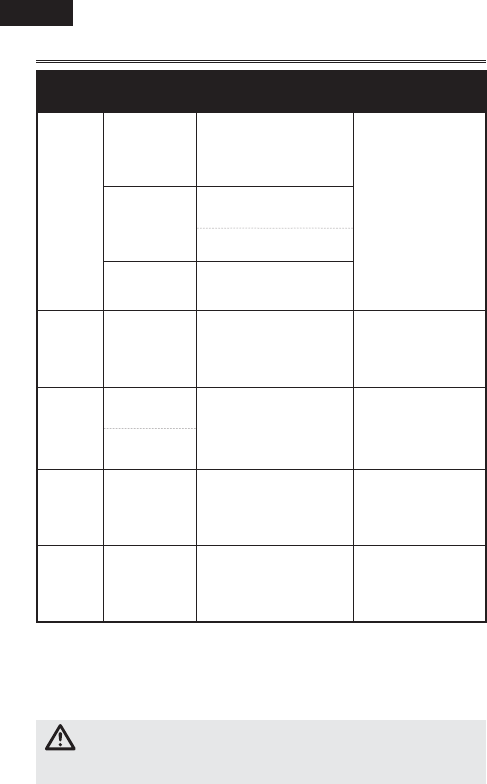
EN
14
Warranty and Service Contact Information
Country of
Purchase Horizon Hobby Contact Information Address
United
States of
America
Horizon Service
Center
(Repairs and
Repair Requests)
servicecenter.horizonhobby.
com/RequestForm/
4105 Fieldstone Rd
Champaign, Illinois,
61822 USA
Horizon Product
Support
(Product Techni-
cal Assistance)
www.quickbase.com/db/
bghj7ey8c?a=GenNewRecord
888-959-2305
Sales sales@horizonhobby.com
888-959-2305
United
Kingdom
Service/Parts/
Sales:
Horizon Hobby
Limited
sales@horizonhobby.co.uk Units 1–4, Ployters Rd,
Staple Tye, Harlow
Essex, CM18 7NS
United Kingdom
+44 (0) 1279 641 097
Germany
Horizon Tech-
nischer Service service@horizonhobby.de Christian-Junge-Straße 1
25337 Elmshorn,
Germany
Sales: Horizon
Hobby GmbH +49 (0) 4121 2655 100
France
Service/Parts/
Sales:
Horizon Hobby
SAS
infofrance@horizonhobby.com 11 Rue Georges Charpak
77127 Lieusaint, France
+33 (0) 1 60 18 34 90
China
Service/Parts/
Sales:
Horizon Hobby –
China
info@horizonhobby.com.cn Room 506, No. 97
Changshou Rd.
Shanghai, China 200060
+86 (021) 5180 9868
FCC Information
This device complies with part 15 of the FCC rules. Operation is subject to the
following two conditions: (1) This device may not cause harmful interference, and (2)
this device must accept any interference received, including interference that may
cause undesired operation.
This product contains a radio transmitter with wireless technology which has been
tested and found to be compliant with the applicable regulations governing a radio
transmitter in the 2.400GHz to 2.4835GHz frequency range.
IC Information
This device complies with Industry Canada license-exempt RSS standard(s). Operation
is subject to the following two conditions: (1) this device may not cause interference,
and (2) this device must accept any interference, including interference that may
cause undesired operation of the device.
CAUTION: Changes or modifications not expressly approved by the
party responsible for compliance could void the user’s authority to
operate the equipment.
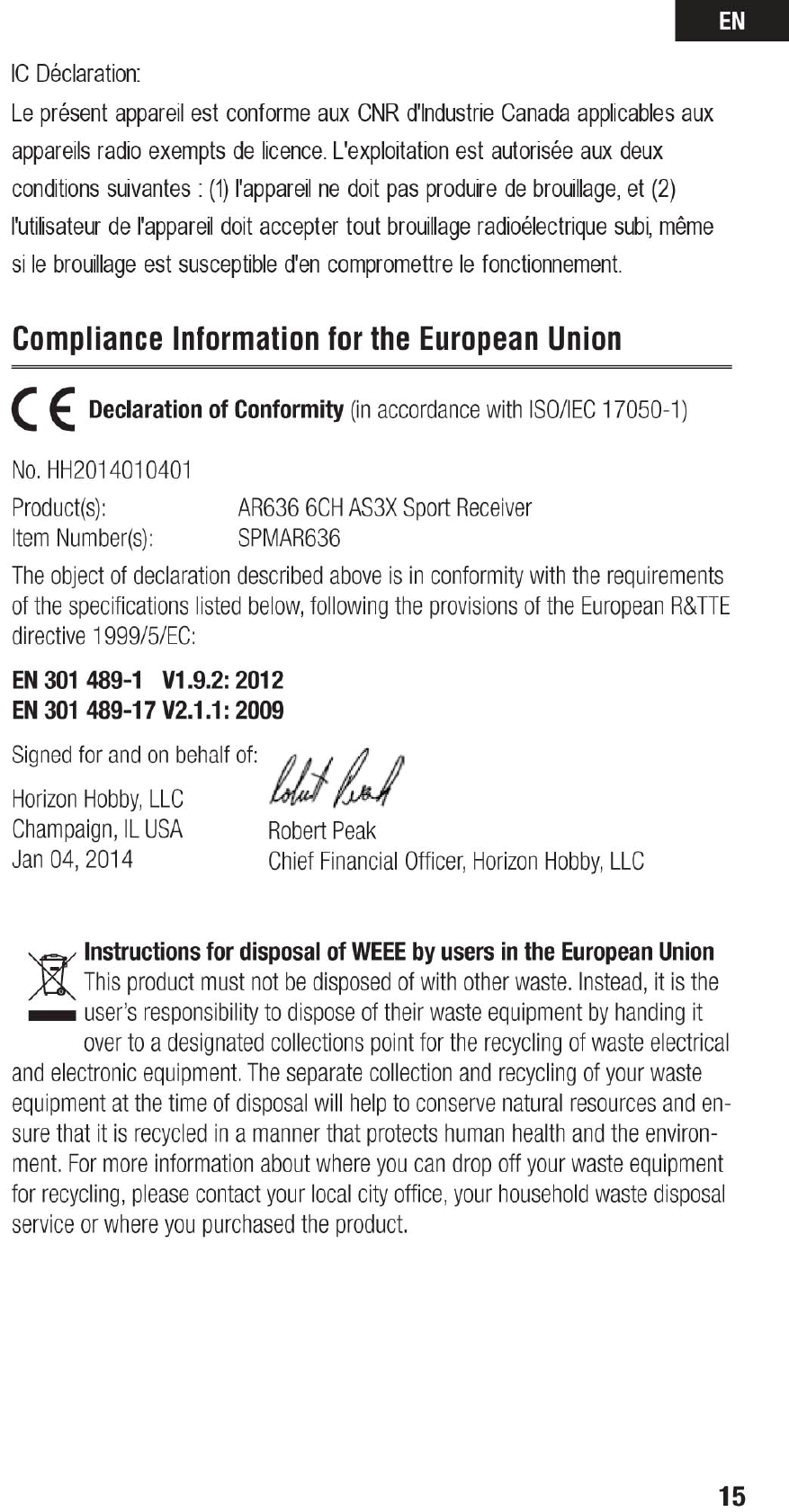

EN
16
© 2014 Horizon Hobby, LLC
DSM, DSM2, DSMX, the DSMX logo, AirWare, QuickConnect, ModelMatch, ServoSync, STi,
Hangar 9, AS3X, SmartSafe and the Horizon Hobby logo are trademarks or registered trademarks of
Horizon Hobby, LLC. The Spektrum trademark is used with permission of Bachmann Industries, Inc.
JR is a registered trademark of JR Americas. US 7,391,320. Other patents pending.
Created 04/14 42801